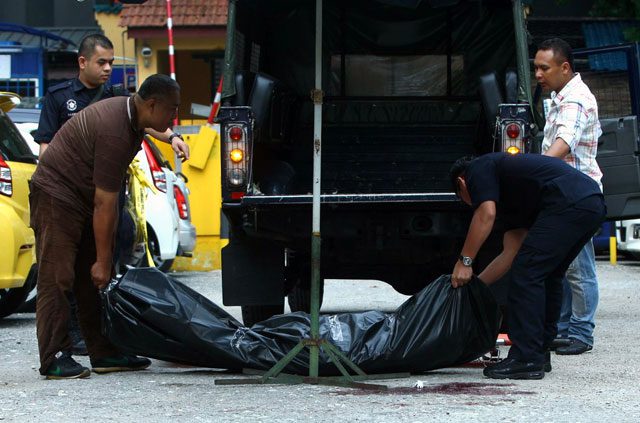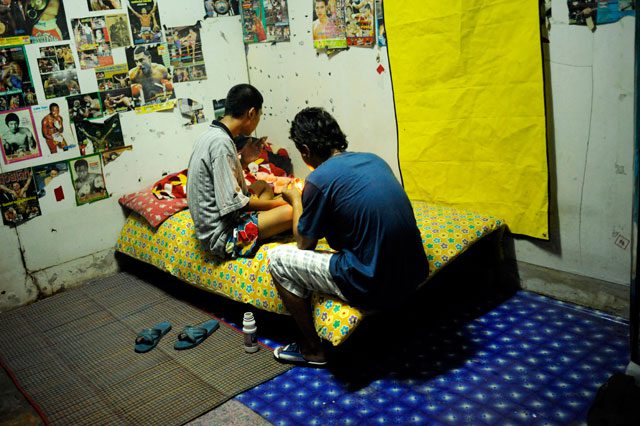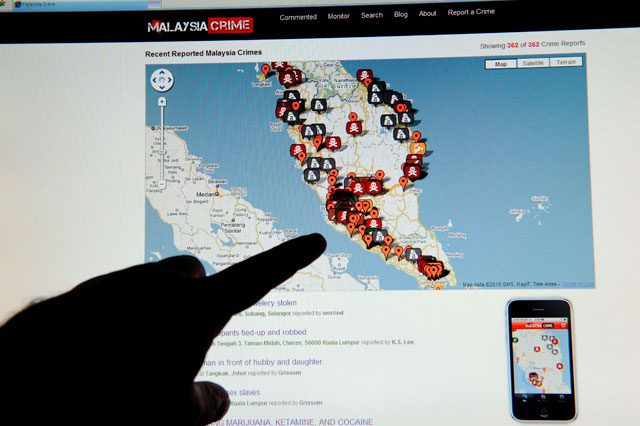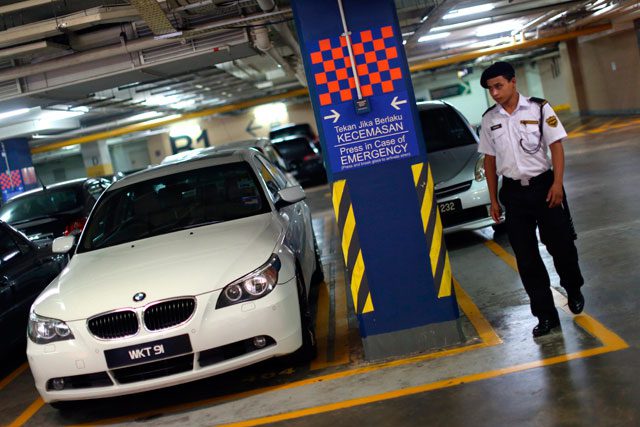There was no altar, no incense and no animal sacrifice when Ramesh forfeited his own blood to be initiated as a gang member. Instead of engaging in the sacrificial rites traditional to Malaysia’s infamous Chinese triad gangs, all it took was a pittance of 3.60 ringgits ($1.11), plus a few drops of blood, for Ramesh to be accepted into the fold.

Once initiated, gang members like Ramesh are expected to fulfil a host of duties that include selling drugs, guarding shops with guns and knives, extorting money from fellow school students or being on “standby” and ready for action.
“We cannot abandon our fellow gang members,” said Bala, another former gang member of Indian descent, who was recruited when he was just 13 years old. “We need to be of one heart and one mind to support the gang, and even sacrifice our families if we need to.”
Ramesh does not disclose his real name or age, but reveals he was forced to break free from the stranglehold of gang life when his duty to guard its turf became too dangerous. Even though he has cut ties with the gang, Ramesh often finds himself tangled in fights and he struggles to secure regular work.
Most former gang members in Malaysia face a deluge of challenges upon deciding to leave gang life behind, including the social stigma of being an ex-gang member and the threat of
violence from former “brothers”.
In recent months, Malaysia experienced a glut of violent offences, many of which were attributed to gangs.
“Organised crime gangs in Malaysia concentrate on drug manufacturing, liquor and cigarette smuggling, prostitution, loansharking, protection, extortion and online gaming activities,” said Dave Avan, founder of crime watchdog Malaysians Against Rape, Assault and Snatch (MARAH).

In late July, the shooting of R. Sri Sanjeevan, chairman of Malaysian crime watchdog MyWatch, stirred up considerable controversy, given that it occurred shortly after he called for an independent commission to investigate police involvement in organised crime syndicates. In the wake of the incident, Malaysian police waged a battle against the suspicion that had enveloped the force, while Sanjeevan fought for his life. Two days after the Sanjeevan shooting, Hussain Ahmad Najidi, founder of the Arab-Malaysian Development Bank, was gunned down in broad daylight
in a downtown Kuala Lumpur car park, dying instantly. According to police, Najidi was targeted by three gang members due to property dealings gone awry. Just days later, a gold-trader
in Pandan Indah survived after he was shot three times, before a local businessman was killed in a drive-by shooting in Kota Kinabalu.
These are just a handful of incidents in what seems to be a growing wave of violence in Malaysia. Statistics released by the police show that there were 15,098 murders and robberies in the first half of this year, fanning the flames of public fear over organised crime.
“A large portion of violence is related to organised groups,” said Teoh El Sen, a Malaysia-based journalist at Astro Awani television news channel, who has been following the gang issue for years. “Gang fights occur on a daily basis. The objectives of unorganised groups are simple and their capabilities are limited compared to gangs.”
Some commentators have blamed the tidal wave of violent crime on the repeal of the Emergency Ordinance Act, which allowed individuals suspected of being a threat to national security to be detained for two years without trial. The legislation was repealed in 2011 as Prime Minister Najib Razak sought to banish legislation that appeared too draconian for his party’s image.
However, some anti-crime activists have blamed the surge in violent activity on the wide availability of illegal firearms. Guns are the weapons of choice in gang turf wars, and the permeable border between Malaysia and Thailand poses a colossal challenge to authorities monitoring the illegal weapons trade.
S. Gobi Krishnan, a Malaysian anti-crime activist, reported that guns can be rented for $90 for a few hours, with bullets costing as little as 80 cents each. The preference for rentals began last year when Malaysian gangs began to take inspiration from Mexico’s murderous drug cartels. According to Krishnan, a Glock 9mm semi-automatic pistol is the most commonly available gun. Malaysian authorities have been urged to publish lists of licensed firearm owners, although this step is unlikely to curb crime given that the majority of gun rentals are almost guaranteed to be unregistered.
As public fear reached its peak over the recent spate of shootings, the government responded by launching an operation to blitz gang-related crime. A late-September report stated that Malaysia’s crime index had declined by 7.34% since the August launch of Ops Cantas – which translates to “cut off” – with a total of 11,036 arrests made.

While authorities keep up appearances by publicly identifying gang names and logos and carrying out illegal weapons raids, little action has been taken in the way of early intervention.
Recent reports suggest that an increasing number of gangs are targeting schoolchildren as new recruits. Gang members are known to wait outside school premises to pick out potential members, and an MSN news report even documented an instance of a student being invited to join a gang via Facebook. An image of grinning teenage gang members wielding sharp weapons and crash helmets accompanied the invitation.
According to Nantha Kumar, a journalist at online news source Free Malaysia Today, gang recruitment is generally carried out on a racial basis. “There are two gangs called 18, one known as 18 Merah (red) and the other as 18 Hitam (black). The red faction is dominated by Chinese while the black is dominated by Indians,” he said.
Information released as part of Ops Cantas revealed that 18 Merah boasts a total of 1,209 members. Organised according to ancient Chinese tradition, the gang is active in Selangor, Kuala Lumpur, Perak and Johor, and is allegedly responsible for a large proportion of Malaysia’s drug trafficking. The Ops Cantas figures also revealed an estimated total of 40,000 gang members nationwide.
Although police in Georgetown implemented additional motorbike patrols near schools targeted by gangs earlier this year, there are few measures established within schools to pre-empt student recruitment. Such programmes have been in place for decades in other countries. In the US, Gang Resistance Education and Training (Great) was launched in the 1990s to tackle gang issues on school grounds by providing training for parents, school staff and police officers. According to a study conducted by the University of Missouri, Great students have shown more positive attitudes towards police and lower rates of gang membership in comparison to non-Great students both one year and five years after completing the programme.
Dr Sundramoorthy Pathman, principal investigator on crime and policing at the University of Science Malaysia, said that “a false sense of self-esteem, lack of parental supervision and school discipline, and protection from other gangs” added to the attraction of organised crime syndicates.

Gang members often become trapped in a cycle of arrest, detainment and release, upon which they resume gang activities, according to Susan Tam, team leader at Hati.my, a Malaysian NGO directory. “This is happening because there is no solid rehabilitation programme,” she said. Tam explained that a healthy working relationship between families, schools and the local community could all play a part in combating the influence of gangs. “In school, the environment should be monitored and there should be extra activities for students to be productive. Schools should also provide counselling support for those who need it.”
Indeed, the results of a survey by Christian NGO Malaysian Care showed that eight out of nine Malay and Indian gang members that participated in the study had been coerced into joining their gang by their peers.
Even after gang members unshackle themselves, affiliations seem to last a lifetime. “They may not engage in gang-related activity, but they keep their networks for loyalty, friendship, support and profiteering,” said Tam.
Malaysian Care employees working with ex-gang members at a juvenile detention centre in Kajang reported that individuals risk their own safety if they quit the gang, as well as the safety of their families.
“They try to take revenge on us because they are afraid that we have become police spies,” said Bala, who is now working with Malaysian Care to rebuild his life. His views echo those of Malaysian Care employees working at Kajang Prison, who say that more needs to be done by the government to help rehabilitate ex-gangsters.
“I am rejected by society, and I feel guilty when I face people that know my background,” Bala said. “Some people still look at me in my old identity and are scared when they see me. It’ll take some getting used to.”
